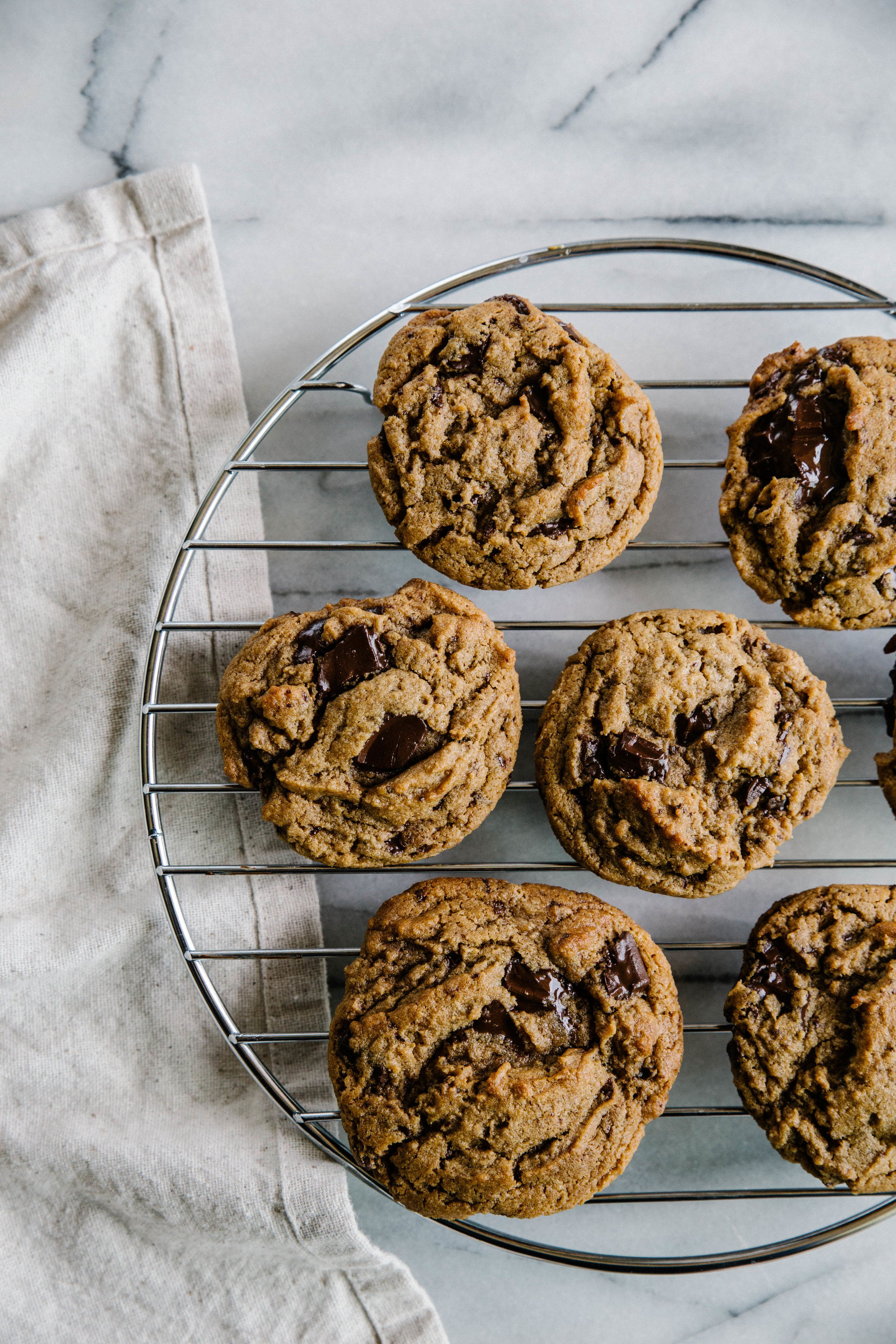Peanut Butter Chocolate Chunk Cookies (GF)
/One of my coworkers has celiac disease, an autoimmune disorder caused by gluten intolerance. Whenever I bring treats to the office after a weekend of baking, she is unable to enjoy them. I am too nervous to make her anything special out of my own kitchen, however. A fine layer of flour has settled over every surface and I am not careful enough to avoid cross contamination when filling measuring cups and spoons. As someone who also suffers from food allergies—mainly tree nuts and dairy—I know how awful (and life-threatening) it can be when someone else isn't attentive enough.
So I send her recipes instead, gluten-free inventions from my kitchen that she can create in her own.
Though I adore my (gluten-free) almond butter chocolate chip cookies from a couple years ago, I wanted to create a recipe that was more accessible. Almond butter is not only expensive, but it can be difficult to find. Peanut butter, on the other hand, is abundant and cheap. Figuring out the proportions of ingredients was the tricky part.
Even though I would consider myself a fairly prolific baker, I have a terrible habit of not reading recipe directions (this is especially true if the recipe is one of my own). As a place to begin, I planned to mimic the proportions of the almond butter cookie. The first batch of cookies was nearly perfect, but I realized, after eating my third cookie, that none of my ratios were as intended. The second batch, following my original directions, turned out worse than the first. Sandy and crumbly, they reminded me more of shortbread than a gooey chocolate chip cookie.
My lack of recipe literacy has been helpful before (especially with these double chocolate brownies) and this time was no exception. The third batch improved on the first batch, and the recipe was complete. I tried the recipe with the standard processed peanut butters ("Natural Jif" and "Natural Skippy") and the recipe turned out well both times. Though you can use a completely natural nut butter, I would hesitate doing so. These butters tend to create a more oily batter, which causes the cookies to spread differently (either too thin or not enough).
I shared the heaping pile of cookies I created with my teenage students, and this recipe came out the clear winner. The cookie is chewy, gooey, and full of melted chocolate. The fact that it is also gluten-free is just the icing on the cake.
These (gluten-free) Peanut Butter Chocolate Chunk cookies are easily my favorite peanut butter and chocolate cookie combination. The texture is thick and dense. Brown sugar adds a chewiness that appears once the cookies have cooled. Combined with chocolate chunks, these cookies could rival any similar cookie, gluten-free or not. Serve these with milk or coffee and dessert will become something special.
One Year Ago: Blueberry Pie
Two Years Ago: Honey Chocolate Chunk Cookies, Strawberry Charlotte, and Fresh Strawberry Cake
Three Years Ago: Homemade Mascarpone, Ladyfingers, Tiramisu Cake, and Peanut Butter Cornmeal Cookies
Four Years Ago: Strawberry Milk, Raspberry Swirled Chocolate Chunk Ice Cream, Blueberry Coffee Cake, and Vanilla Pear Muffins
Peanut Butter Chocolate Chunk Cookies
Yields approximately 16 cookies
3/4 cup (200 grams) creamy peanut butter
2/3 cup (135 grams) brown sugar, packed
1 large egg
1 teaspoon vanilla extract
1/2 teaspoon baking soda
1/4 teaspoon salt
4 ounces (113 grams) semi-sweet chocolate, coarsely chopped
Preheat oven to 350 degrees F (180 degrees C).
In a medium mixing bowl, mix together the peanut butter, brown sugar, egg, and vanilla until uniform. Stir in the baking soda and salt. Fold in the coarsely chopped chocolate.
Drop cookies by the tablespoon onto a baking sheet and bake for 8-10 minutes. Cool on the baking sheet for several minutes before moving to a cooling rack to cool completely (the cookies will be fragile and need to set-up before they can be moved).























